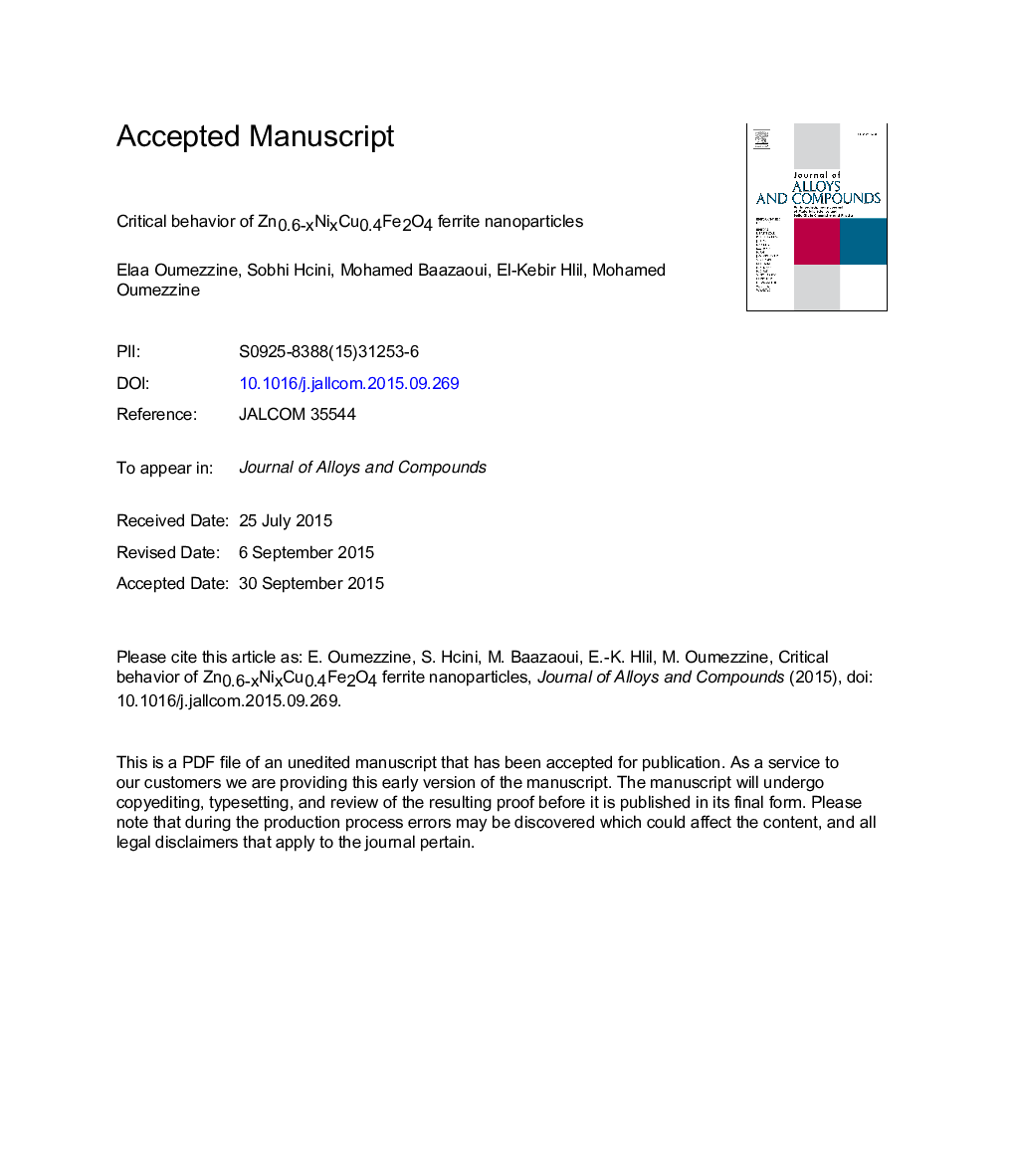| Article ID | Journal | Published Year | Pages | File Type |
|---|---|---|---|---|
| 1607721 | Journal of Alloys and Compounds | 2016 | 29 Pages |
Abstract
We have investigated the critical behavior of Zn0.6âxNixCu0.4Fe2O4 (x = 0, 0.2 and 0.4) ferrite nanoparticles near the ferromagnetic-paramagnetic (FM-PM) phase-transition temperature (TC). Experimental results reveal that all samples undergo a second-order phase transition. Through various techniques such as modified Arrott plot, Kouvel-Fisher method and critical isotherm analysis, the estimated critical exponents are close to those expected for three-dimensional Heisenberg class for x = 0 (β = 0.386 ± 0.002, γ = 1.271 ± 0.012 and δ = 4.387 at TC = 305 K). Whereas for a high amount of Ni, these exponents belong to a different universality class (β = 0.716 ± 0.063, γ = 0.807 ± 0.008 and δ = 2.010 at TC = 565 K for x = 0.2 sample) and (β = 0.785 ± 0.004, γ = 0.797 ± 0.002 and δ = 2.061 at TC = 705 K for x = 0.4 sample). This is due to the fact that the substitution of Zn2+ (non-magnetic ions) by Ni2+ (magnetic ions) increases the A-B interaction sites of AB2O4 spinel ferrite which in turn increases the magnetic disorder when increasing Ni content. Using the magnetic entropy change equation: |ÎSMmax|=a(H)n, we have studied the relationship between the exponent n and the critical exponents of our samples. The obtained n value are 0.641, 0.843 and 0.873 for x = 0, 0.2 and 0.4, respectively. These values are in good agreement with those deducted from the critical exponents using the KF method.
Related Topics
Physical Sciences and Engineering
Materials Science
Metals and Alloys
Authors
Elaa Oumezzine, Sobhi Hcini, Mohamed Baazaoui, E.K. Hlil, Mohamed Oumezzine,
